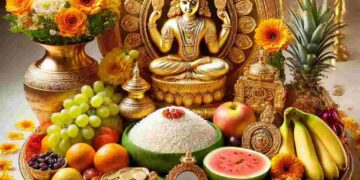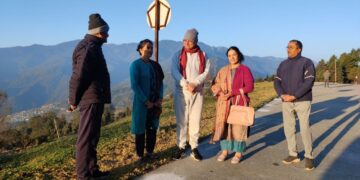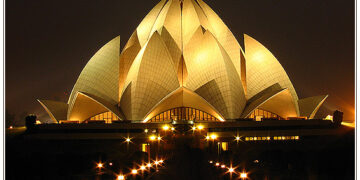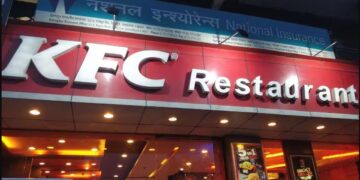Kerala, the land known as “God’s Own Country,” is celebrated for its rich cultural heritage, picturesque landscapes, and vibrant traditions. While most of the world welcomes the New Year on January 1st, Kerala has its unique way of celebrating, deeply rooted in its history and traditions. Here, the New Year is synonymous with festivals like Vishu and Onam, which are celebrated with grandeur and cultural fervor.
In this blog, we’ll explore how Kerala celebrates New Year, the importance of its traditions, and the various ways people in Kerala welcome the new beginnings. Let’s dive into the heart of Kerala’s New Year celebrations!
Kerala’s Unique New Year: Vishu and Onam
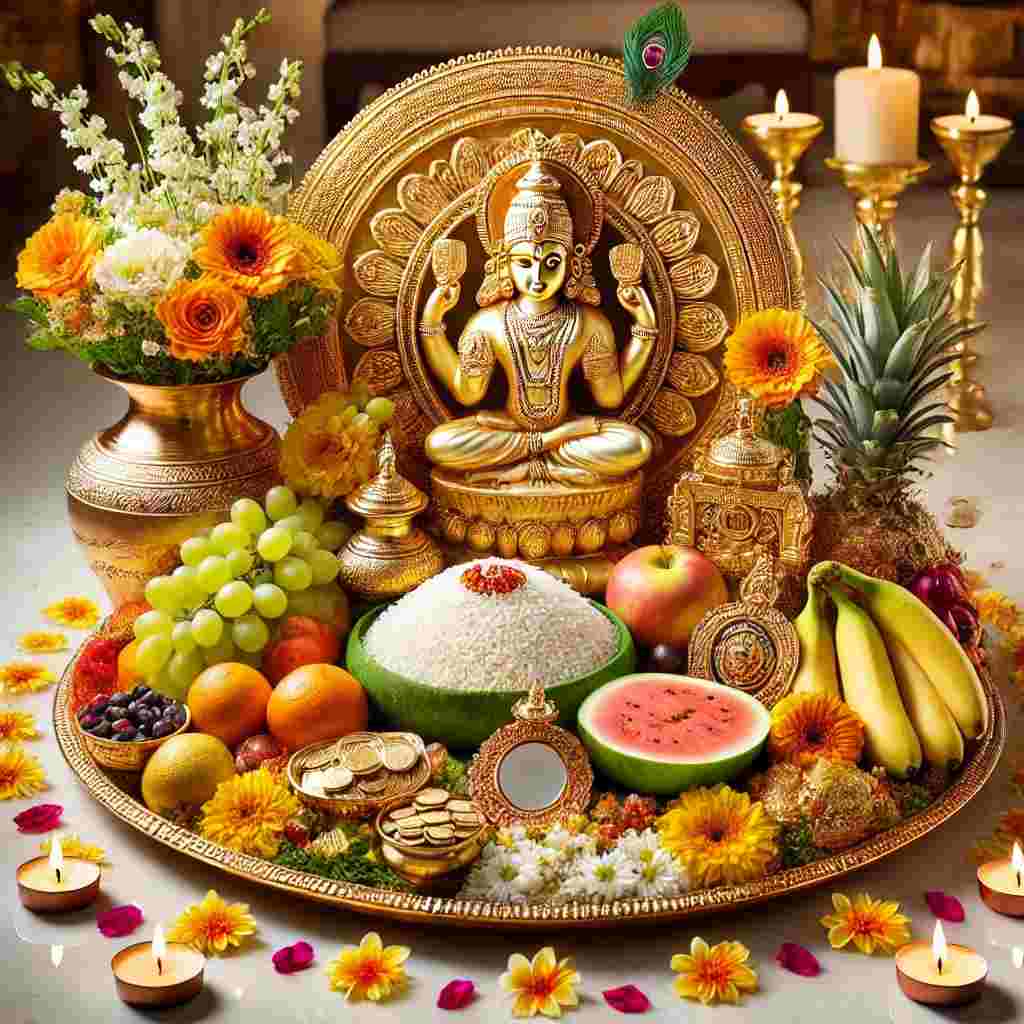
Unlike the Gregorian calendar’s January 1st, Kerala observes New Year during Vishu, which falls around mid-April. Vishu is often regarded as the astronomical New Year and is a harvest festival, symbolizing new beginnings, prosperity, and the start of the agricultural season.
On the other hand, Onam, celebrated in August or September, marks the traditional harvest festival and the homecoming of the mythical King Mahabali. Though it isn’t strictly considered New Year’s Day, it is one of Kerala’s most significant festivals and also plays a vital role in symbolizing renewal and hope for the coming year.
Vishu: The Astronomical New Year
Vishu is celebrated on the first day of Medam (the Malayalam month) and usually falls on April 14th or 15th. Vishu is astrologically significant as it marks the day when the sun crosses the equator and moves into Aries, signaling the beginning of a new season.
Key Traditions and Rituals of Vishu
1. Vishukkani
One of the most important aspects of Vishu is Vishukkani, which means “the first thing seen in the morning.” It is a symbolic arrangement of auspicious items such as rice, fruits, vegetables, gold coins, and a mirror, which is placed before an image or idol of Lord Krishna. The head of the family prepares Vishukkani the night before, ensuring it looks prosperous and pleasing to the eyes.
On the morning of Vishu, family members are woken up early and taken to see the Vishukkani with their eyes closed. The sight of the Vishukkani is believed to bring luck, prosperity, and abundance for the rest of the year.
2. Vishu Kaineettam
Another major tradition is Vishu Kaineettam, where elders in the family gift money to the younger ones as a token of blessings for prosperity. This ritual strengthens familial bonds and conveys a spirit of sharing and care.
3. Firecrackers and Traditional Feasts
Vishu celebrations are incomplete without bursting firecrackers. After the early morning rituals, the day is filled with festivity. Children, in particular, enjoy setting off crackers, marking the joyous occasion.
The Vishu Sadya, a traditional vegetarian feast, is another highlight of the festival. The Sadya includes dishes like rice, sambar, aviyal, and payasam, served on a banana leaf. The variety of dishes is a celebration of the abundant harvest and the prosperity the festival promises.
Onam: The Festival of Prosperity and Unity
Though Onam falls later in the year, it is also seen as a new beginning for many in Kerala. Celebrated for ten days, Onam marks the harvest season and is deeply connected with the story of the mythical King Mahabali. According to legend, King Mahabali visits Kerala every year to bless his subjects during Onam.
Major Highlights of Onam
1. Pookalam (Floral Designs)
During Onam, people create beautiful Pookalam, intricate flower carpets, in front of their homes. These floral arrangements are made using a variety of vibrant flowers and symbolize welcoming the mythical King Mahabali. The designs often grow in size and complexity as the festival progresses.
2. Onam Sadya
The Onam Sadya is a grand feast served on banana leaves and is the centerpiece of Onam celebrations. It consists of over 25 dishes, including rice, sambar, rasam, parippu, aviyal, thoran, pickles, papadam, and multiple types of payasam. The Sadya is a significant part of the festival, representing abundance and the joy of sharing food with loved ones.
3. Vallamkali (Boat Races)
One of the most visually stunning and exciting parts of Onam is the Vallamkali, or traditional boat races. Held on the backwaters of Kerala, these races see hundreds of rowers competing in snake boats, cheered on by crowds. Vallamkali is more than a sport; it is a celebration of Kerala’s deep connection with water and its cultural legacy.
4. Pulikali (Tiger Dance)
Another unique aspect of Onam is the Pulikali, or the Tiger Dance. Performers paint their bodies to resemble tigers and dance to the rhythm of drums, reenacting tiger hunts. This dance is symbolic of Kerala’s rich folk traditions and adds a playful, energetic element to the celebrations.
The Significance of New Year Celebrations in Kerala
Both Vishu and Onam carry deep cultural and spiritual significance. These festivals symbolize the cyclical nature of life, the renewal of hope, and the importance of community. They are times of reflection, where families come together, and people express gratitude for the past year while looking forward to a prosperous new beginning.
In many ways, Kerala’s New Year celebrations reflect the region’s agrarian roots and its respect for nature. The rituals, feasts, and festivities are closely tied to the land, harvest, and the changing of seasons.
New Year of Kerala in the Modern Age
While traditional practices still form the core of Kerala’s New Year celebrations, modern influences have also made their way into the festivities. The younger generation often celebrates both January 1st and Vishu, combining global New Year customs with Kerala’s rich traditions.
Shopping malls, restaurants, and public spaces organize special events for the New Year, including parties and concerts. Kerala also hosts fireworks displays and cultural programs, blending traditional values with contemporary ways of celebration.
How Tourists Can Experience Kerala’s New Year
If you’re a traveler looking to experience Kerala’s New Year celebrations, plan your visit around Vishu or Onam to witness the cultural grandeur firsthand. Some of the best places to enjoy the festivities include the backwaters of Alappuzha for the boat races, Thrissur for Pulikali, and Kochi for its grand Vishu celebrations.
During Vishu, many temples in Kerala, especially Guruvayur Temple and Sabarimala, hold special prayers and rituals. These temples come alive with the devotion of the people, offering a glimpse into Kerala’s spiritual heart.
Onam, with its ten-day celebration, is a treat for tourists. Each district in Kerala hosts its version of the festival with processions, dances, and community events. Don’t miss the chance to try an authentic Onam Sadya in a traditional household or a local restaurant.
Conclusion: Embracing New Beginnings in Kerala
Kerala’s New Year celebrations, whether through Vishu or Onam, are a beautiful amalgamation of tradition, culture, and spirituality. These festivals offer an opportunity for people to connect with their roots, celebrate life’s blessings, and look forward to new beginnings.
Whether you are a local or a visitor, Kerala’s New Year festivities provide a deep sense of joy, unity, and cultural pride. From the visual splendor of Pookalam and Vallamkali to the soul-satisfying feasts of Vishu Sadya and Onam Sadya, Kerala’s New Year is an experience that lingers long after the celebrations end.
Embrace the spirit of renewal, prosperity, and gratitude by participating in Kerala’s unique and vibrant New Year traditions!
By offering a window into the traditions, rituals, and vibrant culture of Kerala, this blog helps readers understand how deeply embedded these festivals are in the lives of the people, and why they are celebrated with such fervor year after year.
